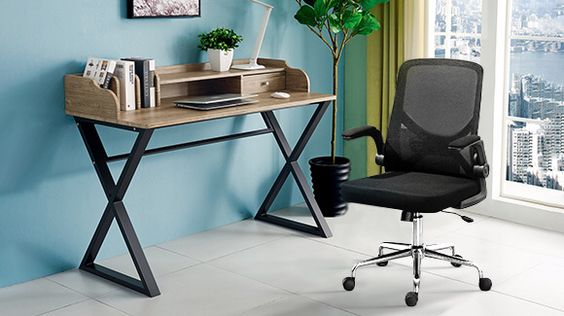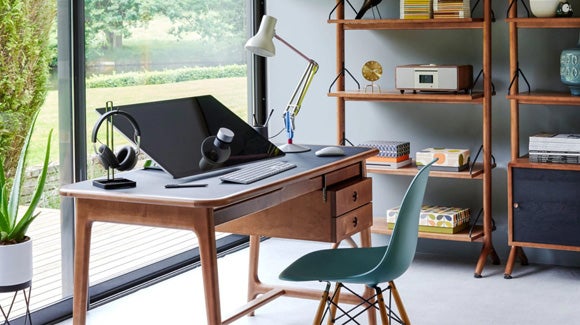
Ideas & Inspiration To Design Your Home Office

With two-thirds of Australians working from home, having a functional, ergonomic and stylish home office is more important than ever. From increased efficiency to overall wellbeing, having a workspace you actually want to spend time in will set the tone for a positive and productive workday. If you’ve been working from home for the last few years and are yet to upgrade your space, now could be the time for you to finally take the plunge.
But because we know overhauling a room can be a little overwhelming, we’ve decided to share some tips and tricks for making home office design a breeze.
8 Essential Home Office Ideas And Tips
Ready to be inspired? Here are eight home office design, decorating and practicality tips you need to know.
1. Think Carefully About Location
It’s number one on the list for a reason — where you place your desk is the most important variable in designing a practical and stylish home office. Before settling on a location, consider:
. The nature of your work
. Your work habits
. Household noise levels
. Power outlets and WiFi signal
. Personal preferences (e.g. natural light)
Whether it’s a separate study, a corner in your bedroom, your garage or a sunroom, the perfect space for a home office will be different for everyone. An accountant with clients may need a separate room with an area for seating, while a person working part-time may feel most comfortable in the living room where you can watch young kids.
2. Select An Appropriate Desk And Chair
If there’s one thing people working from home have in common, it’s back pain. Choosing a good chair and desk for your home office is not just important for your work — but for your health, too.
Start with an office desk that’s wide enough to fit your needs without overwhelming your space. Something within the range of 150cm + wide and 70-80cm high is a good range. Your next consideration should be desk type. If you work for long periods, a standing desk could help you get some physical activity in. If you need close access to files or stationary, a desk with a hutch may be a good solution.
There are similar considerations when it comes to choosing an ergonomic office chair. Look for something with an upholstered back, adjustable height and arms for ultimate comfort, and explore features such as swivel and stackability according to your personal needs.

3. Ensure You Have Ample Storage And Shelving
Whether you’re working in a tight corner or an entire room, proper storage is an essential part of a work from home space. Fit out your home office with storage like you might have in an actual office. That means file cabinets, cupboards and even shelving.
Take your workflow into consideration when planning out your storage. Keep current work in the drawers beside your desk and anything seldom looked at in a well-organised file cabinet. Be flexible and willing to adjust your storage needs as you use the space.
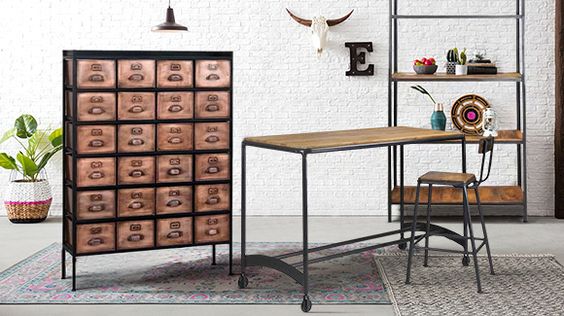
4. Keep Things Minimal And Uncluttered
Clutter is productivity’s worst nightmare. One way to make a huge difference in how you work is by starting with a clean, simple workspace. What does that mean?
- Storage to hide paperwork, stationery and personal items
- Hidden cables to keep the space free from disarray
- Keeping only the bare essentials on display
While these habits won’t work for everyone, there’s research behind the idea that less desk clutter makes you more productive. With that in mind, there’s no harm in simply giving minimalism a try.
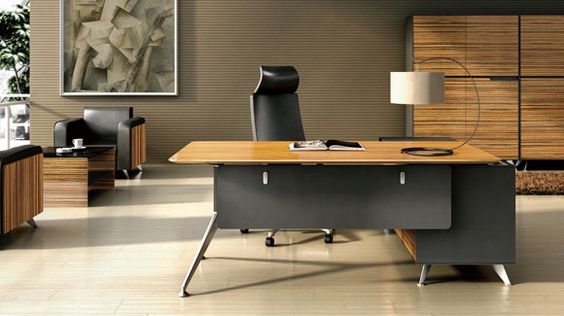
5. Consider How To Light Your Home Office
Lighting in a home office is just as important to your health as a good chair is. Staring at a screen all day can strain on your eyes, and proper lighting can help mitigate any damage this causes. Natural lighting is always the best option, so position your desk close to a window if possible.
Where natural lighting isn’t abundant, supplement with ceiling lights. If you’re only occasionally working into the night, soften harsh light with a floor lamp or small pendant light. For better task lighting, a desk lamp is a good investment.

6. Make Your Office Comfortable
One of the best parts of working from home is that you’re at home! Gone are the harsh fluorescent lights, grey and white desks and too-cold aircon. Unless you’re going for a contemporary look, you can make your study space as homely as you’d like. Here are some ideas for bringing a little bit of personality to your home office:
- Purchase some artwork
- Decorate the room with wallpaper
- Fill shelves with decor items
- Lay down a modern or oriental rug
- Choose some stylish curtains
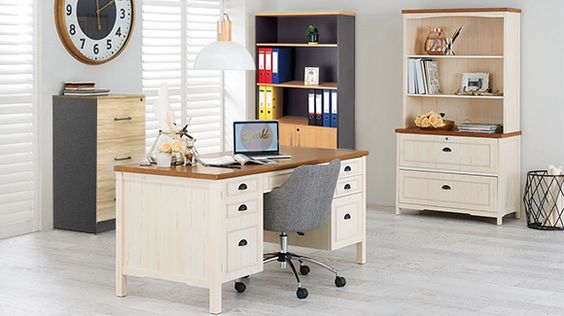
7. Tame The Cord Jungle
Let’s face it — technology can be a bit of an eyesore. Unfortunately, there’s not much you can do to improve the appearance of your two-monitor setup, but what you can do is hide unsightly cables. We’ve found some tried and true ways to reduce tech clutter in your home office space.
- Move your desk closer toward power outlets if it makes sense
- Opt for a wireless router, mouse and printer to reduce cords
- Purchase a desk with grommets to guide wires away from the desktop
- Invest in a fabric cord tamer to both protect your cables and keep them together
- Attach wires to the underside of your desk or down a table leg with adhesive hooks
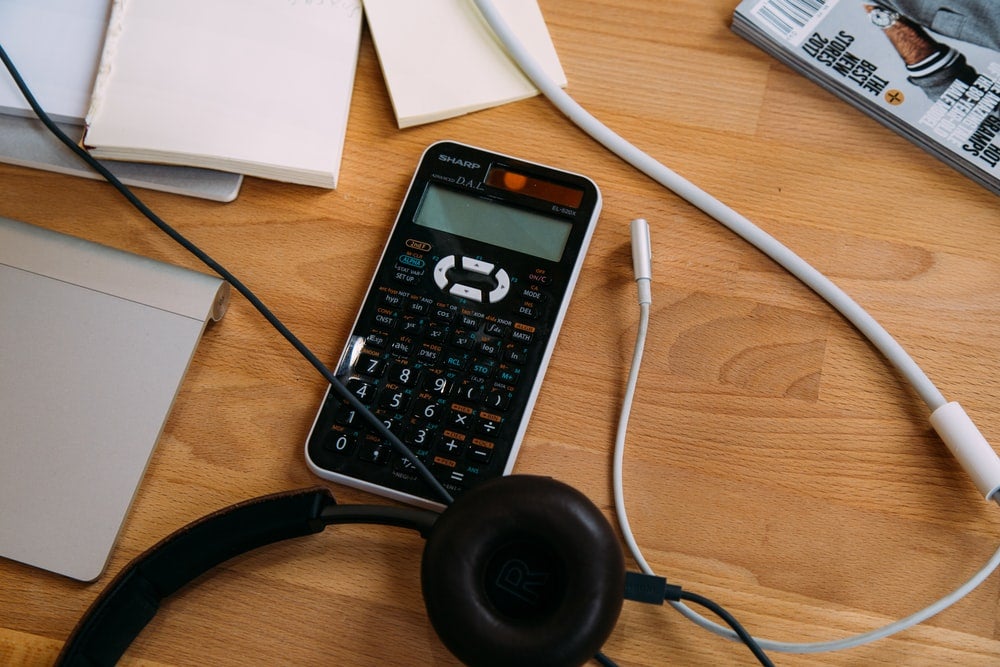
8. Introduce Greenery
Whether that’s one indoor plant or ten is entirely up to you. Numerous studies have shown the benefits of office plants, including stress relief, indoor bacteria balance and fighting formaldehyde exposure. A devil’s ivy potted in a decorative planter is a good choice for dark spaces or for those who don’t water their plants often. If you’ve got plenty of indirect light in your home office, there’s no limit to the plants you can spruce with.
If you’re not much of a green thumb, opt instead for an artificial plant or tree to add a natural element to your room.

How To Organise Your Home Office
Now that you know how to design your home office, it’s time to learn how to organise it. Here’s our quick five-step guide to organising your home home office:
- . Toss it. Start by recycling any papers you don’t need and tossing/repurposing accessories that don’t get used. Wipe down all surfaces.
- . Organise office equipment. Keep printers, waste baskets, desktop filing cabinets and spare office supplies in their separate command centre.
- . Introduce extra storage. Shelving, file cabinets and even cubbies can help you keep your workspace organised. Work within your budget to keep clutter off your desk.
- . Create an organisational system. Wall calendars will help you track your time; Corkboards will inspire creativity; Whiteboards are great for visual problem solving and brainstorming.
- . Maintain your procedures. There’s no point organising if you’re not committed to the upkeep. Using filing systems only takes an extra second of your time and will save you more down the track.
Bring These Study Design Ideas To Life
When it comes to home office furniture and supplies, we have you covered. From the comfiest ergonomic chairs to every kind of desk imaginable, we stock a vast range of home office necessities. No matter your preferences or budget, you’re sure to find the right home office equipment to get you started on your design journey here.

